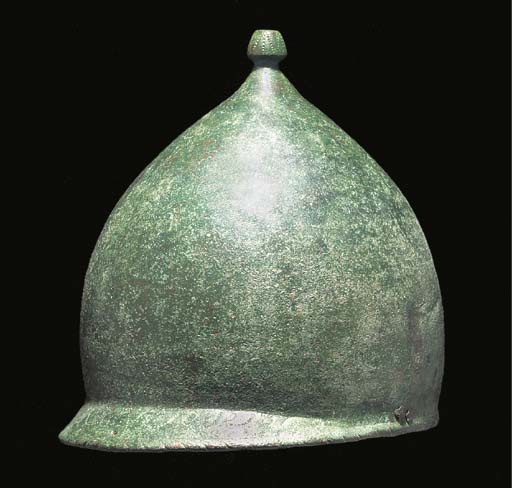


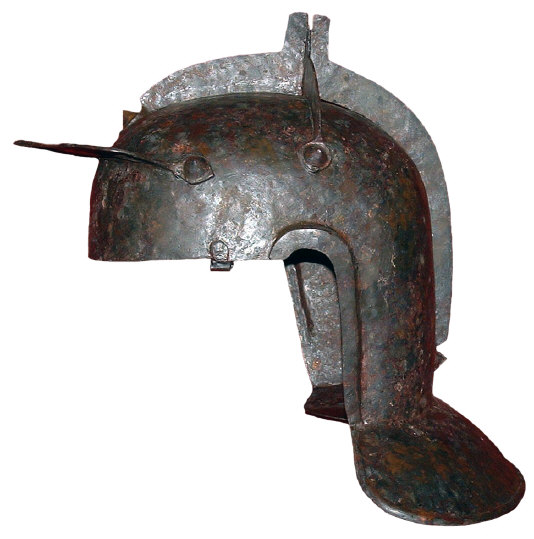
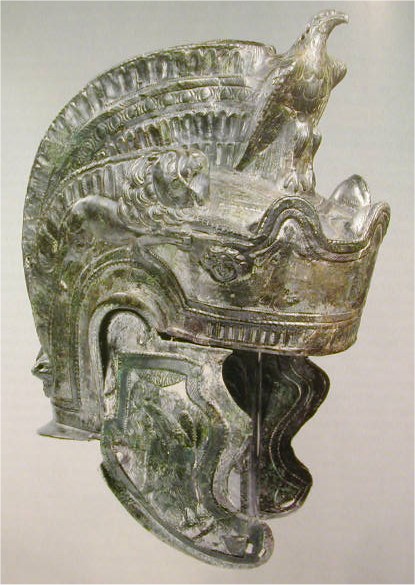
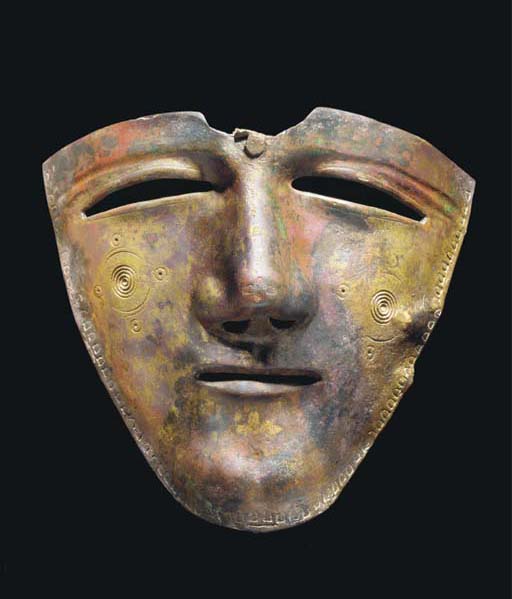
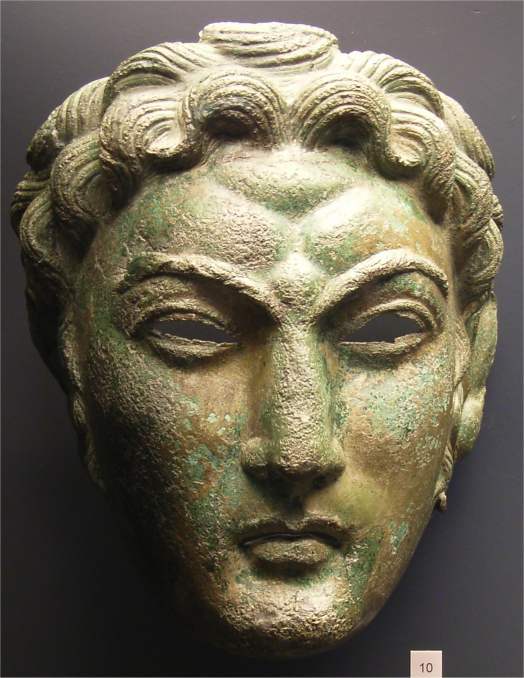
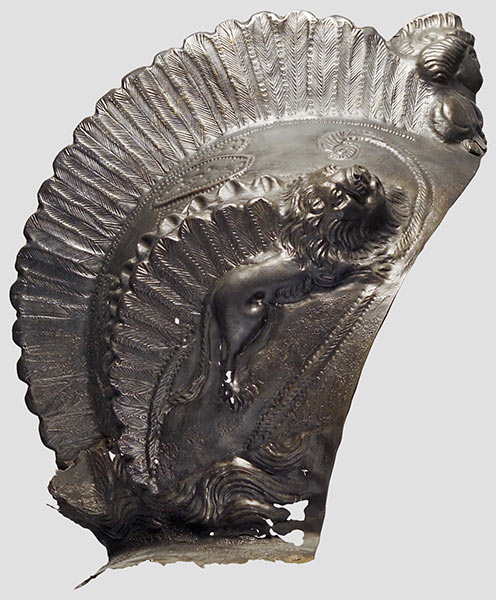
 Roman Military Equipment
Roman Military Equipment
Protective
Equipment: Roman Legionary
and Cavalry Helmets








Roman helmets are listed in the
table below by type and
approx. time period.
(please click on images or underlined links to get to the relevant
section with further examples in chronological order)
The
corresponding H.Russell
Robinson classification (The armour of imperial Rome, for a
web-summary
see romanarmy.com
) is also shown for each helmet type in red italics. This
classification
is still widely used despite certain inconsistencies. We have not
attempted
to further use the Robinson Subtypes (ie A-X) as it is debatable if
these
reflect a true evolution or more regional differences, ie between
manufacturers.
Our preferred classification remains by found place of the most typical
"namegiving" example, ie Montefortino, Weisenau, Kalkriese, etc.
| Suggested Attribution | ||||||||
| Time / Period | Infantry | Infantry | Infantry | Infantry/Cavalry | Infantry/Cavalry | Cavalry | Cavalry | Infantry/Cavalry |
| Roman Republic
after 300 BC |

MONTEFORTINO Jockey Cap of Montefortino Type A-B |
|||||||
| Gallic Wars of
Caesar - early Augustus 50 BC - 25 BC |
Montefortino (late)
Jockey Cap of Montefortino Type C,D and F |
MANNHEIM, a simple bronze helmet, no crest holders, most probably no cheek pieces but chin strap Coolus Type A-B |
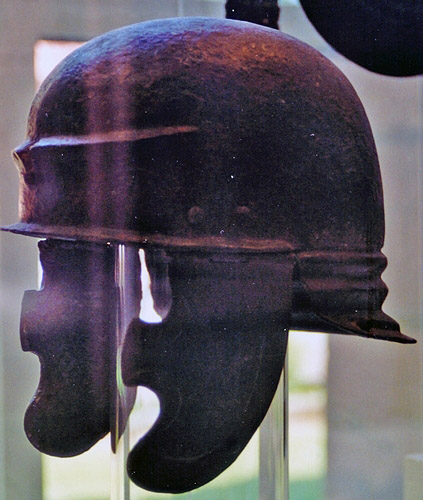
Agen / Port Gallic |
|||||
| Augustus mid
25 BC - 5 BC |
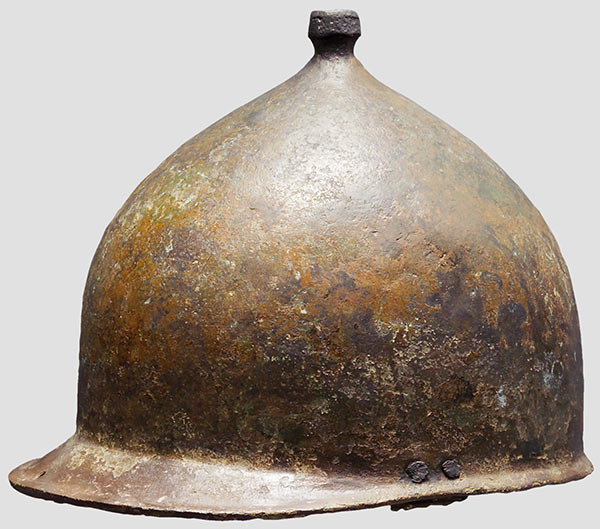
Buggenum montefortino of interim type, used ie during conquest of Raetia and Germania Joeckey Cap of Montefortino Type C |
Mannheim | 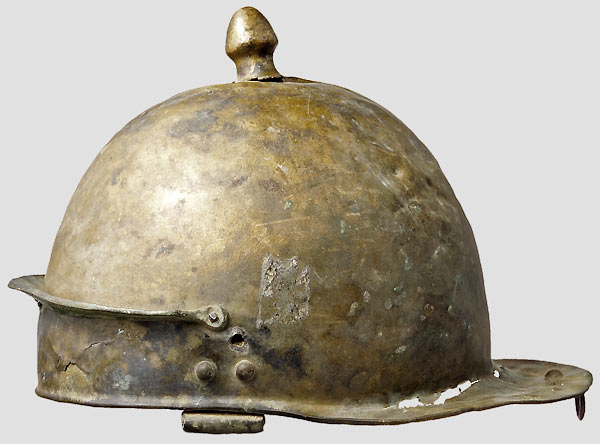
HAGENAU (large and distinct horizontal neck guard, ears not cut out, crest holder seperately cast and soldered) Jockey Cap of Montefortino Type E Coolus Type C |

WEISENAU early (frontal reinforcement, smaller neckguard, usually ears cut out, but some early examples show no ear protectors) Imperial Gallic A
|
||||
| Augustus late
5BC - 14 AD |
Buggenum | Hagenau
Coolus Type D |
Weisenau
Imperial Gallic B |
HELMETS
WITH FACE MASKS
different face mask types known. Association with helmet types not always certain, usually heavily decorated
Cavalry Sports D |
||||
| Tiberian -
50 AD |
Hagenau
(late)
Coolus Type E-I |
Weisenau
Subtype Guttmann Imperial Gallic C-F
|
WEILER likely exclusive for cavalry, with and without face masks Auxiliary Cavalry A |
Helmets
with Face Masks
Cavalry Sports |
||||
| mid to late first Century | Weisenau
types (some
with cross bar reinforcements)
Imperial Gallic G-I
|
Weiler
Auxiliary Cavalry B and G |
Helmets
with Face Masks
Cavalry Sports B,C, and E |
|||||
| early to mid 2nd Century AD | late
Weisenau types
Imperial Gallic J-K
|
Weiler
Auxiliary Cavalry G |
Helmets
with Face Masks
Cavalry Sports C |
|||||
| mid - late 2nd Century AD | 
NIEDERBIEBER mostly with pronounced cross bar reinforcements Auxiliary Cavalry C-F |
Helmets
with Face Masks
Cavalry Sports C, E, F |
||||||
| 3rd Century AD | Niederbieber
Auxiliary Cavalry C-F and I
|
Cavalry Sports H, I |
Helmets
with Face Masks
Mask
Type Alexander
|
|||||
| 4th Century | 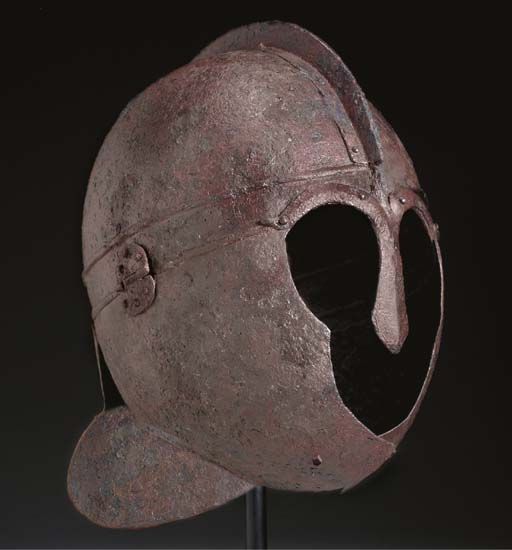
RIDGE HELMET Eastern - maybe Persian - Origin, iron bowl consists of two halves with articulated ridge Berkasovo
|
|||||||
| 5th Century and later | Sutton
Hoo
|
SPANGEN HELMET typical for early Middle Ages, bowl of 4 segments |
Disclaimer: below is not a Roman
helmet...... (British
celtic helmet, London British Museum)
Related Sections of the Roman Numismatic Gallery:
The Location
of Roman Legions
from Caesar to ca. 300 AD is summarized in a table.
Military Equipment
Military Diploma
Roman Legionary Bricks
Countermarks of roman legions on coins are shown in the Legionary
Countermark section.
Coins making reference to roman legions are to be found in the Legionary
Coin section.
Wars and Victories on Roman
coins.
Roman Military Main Page